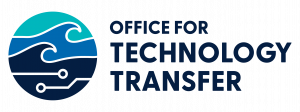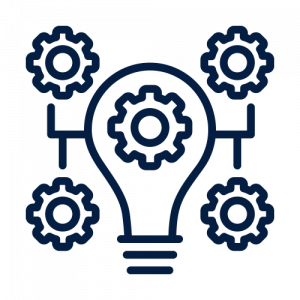Ocean Alkalinity Enhancement Project Looks at Pulling Carbon Dioxide from the Atmosphere
Woods Hole Oceanographic Institution Project is Part of the Broader Carbon to Sea Initiative
Woods Hole, Mass. – With human-induced greenhouse gases fueling global climate change, there is an urgent need to bolster emissions reductions with large-scale carbon dioxide removal.
Scientists are looking at a technique known as ocean alkalinity enhancement, or OAE, as a potential way to remove carbon dioxide from the atmosphere.
As part of this effort, Adam Subhas, an assistant scientist at the Woods Hole Oceanographic Institution (WHOI) in Massachusetts, is the principal investigator leading the LOC-NESS project—short for “Locking away Ocean Carbon in the Northeast Shelf and Slope”—which will carry out its first field experiment in August.
LOC-NESS is one of nine research and engineering projects funded to date by the Carbon to Sea Initiative, which officially launches today as an effort to accelerate the understanding of OAE as a potential method for large-scale carbon dioxide removal.
ICONIQ Impact, which is ICONIQ Capital’s platform for collaborative philanthropy, has matched the funding from Carbon to Sea for the LOC-NESS project. ICONIQ Impact searches for overlooked, underfunded organizations working on some of the most intractable challenges facing humanity–including climate change and systemic barriers to education in the U.S.
OAE is a carbon dioxide removal approach that enhances the ocean’s natural ability to remove carbon from the atmosphere, according to Subhas, a marine geochemist in WHOI’s Marine Chemistry and Geochemistry Department.
Subhas said OAE is an important technique to explore because the oceans are taking up massive amounts of carbon dioxide, which traps heat in the atmosphere and, when dissolved in the ocean, can cause seawater to acidify, adversely affecting ocean health.
“OAE accelerates the ocean’s natural ability to safely and effectively take up carbon dioxide while balancing the ocean’s chemistry at the same time,” he said. “The way this happens is that you add alkalinity, which acts as a buffer that balances out the carbon dioxide that enters the ocean.” Supplementing the ocean’s already massive natural reservoir of alkalinity can result in the ocean actually taking up more carbon dioxide from the atmosphere without provoking ocean acidification, he noted.
“To be clear, OAE is not a get out of jail free card to continue burning fossil fuels. We absolutely need to reduce our greenhouse gas emissions. But when combined with emissions reductions, marine carbon dioxide removal approaches like OAE may help us avoid the worst effects of climate change and draw down emissions that are already in the atmosphere,” Subhas said.
“We’re basically studying the way in which if we increase the alkalinity—this buffering capacity of seawater—by a little bit, can we actually pull carbon dioxide out of the atmosphere and store it safely,” he added. “If we can demonstrate that carbon dioxide can be safely and effectively removed from the atmosphere with this ocean alkalinity enhancement process, that would represent an important step towards getting out of the climate crisis. We can potentially remove carbon dioxide that we’ve been putting into the atmosphere for a very long time, which is causing all these problems with our climate.”
The LOC-NESS project, which began in January and continues through 2025, will conduct a series of field experiments off the northeast coast of the United States. The experiments will help to design the optimal suite of observational and modeling capabilities needed to safely deploy alkaline feedstock from a ship and to determine the atmospheric and environmental impacts—both positive and negative—of carbon dioxide removal via OAE. In addition, the team on the ship will be in constant contact with a team of modelers on land to extrapolate localized results to the entire Northeast shelf and slope region of the Atlantic.
The ship based OAE deployment and monitoring campaign will also leverage WHOI’s expertise in combining cutting-edge science and technology with state-of-the-art seagoing capabilities. The campaign will include an interdisciplinary team of marine chemists, engineers, biologists, and physicists. Other LOC-NESS team members are WHOI scientists Anna Michel (expert in chemical mapping), Aleck Wang (expert in sensors and coastal carbonate chemistry), Jennie Rheuban (expert in monitoring environmental impacts and use-inspired research), Heather Kim (expert in data assimilation and biogeochemical modeling), Ke Chen (expert in high-resolution ocean modeling), and Dan McCorkle (expert in calcium carbonate mineral formation). Jason Kapit is the lead engineer for LOC-NESS project, which is further supporting three WHOI postdoctoral investigators, one Massachusetts Institute of Technology-WHOI Joint Program graduate student, and three technical staff.
In August, Subhas and his team will conduct the first field experiment from the 90-foot research vessel R/V Connecticut in waters about 10 miles south of Massachusetts. As part of this first experiment, Subhas and his team will release nontoxic, fluorescent rhodamine dye into the ocean and track its movement through the water for 72 hours to model the dispersion of a plume of alkalinity over time.
Scientists are interested in how the dye disperses and how fast the dispersal occurs because in order for alkalinity to take up carbon dioxide from the atmosphere, the alkaline material—which will be used in the second field experiment—has to be at the ocean surface, where it interacts directly with the atmosphere. There will be subsequent experiments in 2024 and 2025, as the research progresses.
“The key question here is whether we can measure and model how long a patch of alkalinity enhanced water stays at the surface and is able to interact with the atmosphere. That will give us a sense of how effective that alkalinity might be at taking up carbon dioxide from the atmosphere, and we hope to add alkalinity in the second field experiment in a safe and responsible way,” said Subhas.
Subhas stressed that throughout the LOC-NESS project, his team is taking a careful, transparent approach, and that they will be in constant communication with regional stakeholders—including environmental authorities, aquaculture, fishermen’s alliances, and conservation groups—and with federal agencies.
“This multidisciplinary, transparent approach ensures that our project, and the Carbon to Sea Initiative as a whole, puts rigorous science at the head of any decision-making about the safety, effectiveness, and durability of OAE,” he said. “We’re taking such care with this research because we have to get this right for the sake of the climate, and we also have an obligation to identify and document any unintended effects on the environment caused by these climate interventions. Ocean alkalinity enhancement is one of the most promising carbon dioxide removal approaches, and we want to make sure that we’re doing this science in a way that is the most clearly relevant to what OAE might actually look like if deployed on a larger scale, and making sure that we’re engaging with the right groups—including government agencies, local sea food producers, and environmental groups–to ensure that the science is done responsibly.”
Subhas added that it is important to distinguish the science from a potential nascent industry regarding carbon credits. “We need the science to tell us whether OAE is something that should become a reality or not. Does it work? How well does it work? What are its broader effects on ocean ecosystems? It is critical that science stays out in front of any industrial applications,” he said, adding that “the only way we’re going to be able to do that is by doing field trials and getting some experience with what OAE actually looks like in the ocean.”
Subhas said that while it is critical to test OAE in a careful, systematic way, there is also an urgency to deal with climate change. “We don’t have a ton of time here. We need to design these solutions and get them rolled out, if they seem to be feasible, on a pretty short timescale.”
About Woods Hole Oceanographic Institution
The Woods Hole Oceanographic Institution (WHOI) is a private, non-profit organization on Cape Cod, Massachusetts, dedicated to marine research, engineering, and higher education. Established in 1930, its primary mission is to understand the ocean and its interaction with the Earth as a whole, and to communicate an understanding of the ocean’s role in the changing global environment. WHOI’s pioneering discoveries stem from an ideal combination of science and engineering—one that has made it one of the most trusted and technically advanced leaders in basic and applied ocean research and exploration anywhere. WHOI is known for its multidisciplinary approach, superior ship operations, and unparalleled deep-sea robotics capabilities. We play a leading role in ocean observation and operate the most extensive suite of data-gathering platforms in the world. Top scientists, engineers, and students collaborate on more than 800 concurrent projects worldwide—both above and below the waves—pushing the boundaries of knowledge and possibility. For more information, please visit www.whoi.edu


